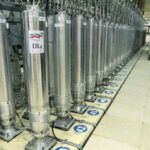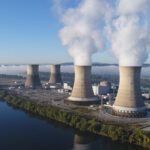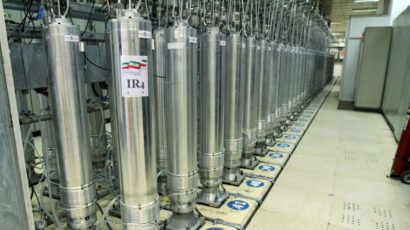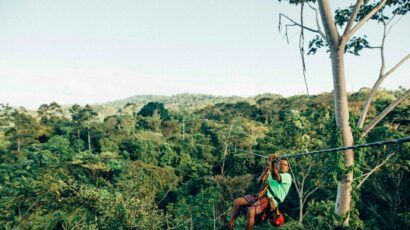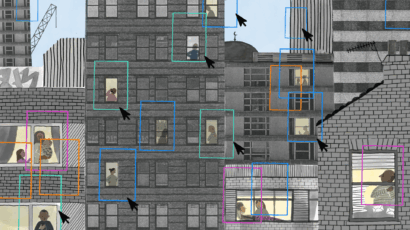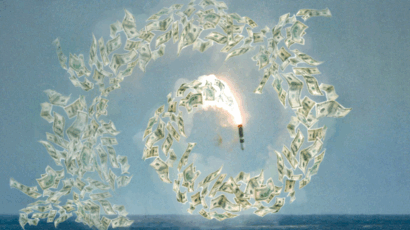Nuclear waste repository case studies: The Netherlands
By Bob van der Zwaan | May 19, 2008
All Dutch radioactive waste is (or has been) produced at essentially four locations–a nuclear power plant in Borssele, a nuclear power plant in Dodewaard, a research reactor in Delft, and a research reactor in Petten. Currently, it’s centrally stored at an aboveground facility of the Central Organization for Radioactive Waste (COVRA), which is situated next to the Borssele reactor on the country’s Zuid-Beveland peninsula and flanks the Westerschelde estuary.1
All Dutch radioactive waste is (or has been) produced at essentially four locations–a nuclear power plant in Borssele, a nuclear power plant in Dodewaard, a research reactor in Delft, and a research reactor in Petten. Currently, it's centrally stored at an aboveground facility of the Central Organization for Radioactive Waste (COVRA), which is situated next to the Borssele reactor on the country's Zuid-Beveland peninsula and flanks the Westerschelde estuary.1
The Dodewaard reactor (a 55-megawatt boiling water reactor located in the Gelderland province) began operating in 1968 and shut down in 1997; its spent fuel was sent to Britain for reprocessing by British Nuclear Fuels (BNFL), the main nuclear fuel cycle services company in Britain. The Borssele reactor (a 485-megawatt pressurized water reactor located in the southwest Zeeland province) began operating in 1973 and recently received a life-extension license to operate until 2033; its spent fuel is sent to France for reprocessing by COGEMA, now part of the French nuclear energy group Areva.
Except for plutonium, the COVRA facility receives all radioactive waste, which notably includes the high-level waste that results from British and French reprocessing of spent fuel from the two Dutch nuclear power reactors. The process of returning this high-level waste for storage at COVRA has recently begun. COVRA also receives the conditioned spent fuel rods from both research reactors, the low- and intermediate-level waste from each of the four reactors (including the waste produced in industries responsible for uranium mining, enrichment, and fuel fabrication for these reactors), and a variety of low- and intermediate-level medical and laboratory waste such as isotopes used at Dutch hospitals.
At present, there aren't plans to build new nuclear power plants in the Netherlands. But because of its European Union commitments to achieve significant carbon dioxide emission reductions in the coming decades, amongst others, the country has shown renewed interest in nuclear energy. In 2006, the Dutch Ministry of the Environment formulated a draft proposal outlining the possible necessary conditions to build new domestic nuclear power plants; these conditions included generic criteria for reactor safety and radioactive waste storage and disposal.2 But given the preliminary status of the proposal, which the government and Parliament still needs to discuss and elaborate upon, and the necessary construction lead-time, 2016 is considered the earliest (and probably optimistic) date a new nuclear power plant could begin operating. Also, it remains unclear whether the energy sector, once detailed national requirements are defined, is willing to build new nuclear power plants in the Netherlands. Nevertheless, if the time does come, the necessary workforce and operational expertise should exist for such a project.
Whereas spent fuel discharged from a reactor is usually first temporarily stored at or near the power plant, no such interim storage facility (dry or wet) is available at the Borssele site. Instead, spent fuel is sent directly to the two designated foreign reprocessing plants. Where the plutonium produced in the Dutch closed nuclear fuel cycle will end up hasn't been resolved entirely. For example, the Dutch share of plutonium stocked at the BNFL reprocessing plant is still under negotiation. Dutch plutonium stored at the French reprocessing site has been added to COGEMA's working stock, which is sold directly for reuse in mixed-oxide (MOX) fuel–principally in any of the contracted MOX nuclear power plants in Europe, but in practice mainly in France. Most likely, plutonium will never be stored at COVRA.
From the inception of its nuclear power program until 2004, the total amount of plutonium produced by Dutch nuclear reactors is estimated at about 3.7 tons, with 1.4 tons sold for reuse in MOX fuel.3
Policy process
Although it hasn't adopted a formal position, the Dutch government recognizes that storing even relatively small amounts of long-lived radioactive waste at COVRA, while a safe intermediate solution, isn't a sustainable end-solution. Given the lengthy half-lives of many of the waste's radioactive isotopes, geological storage is considered the only acceptable long-term solution. From a technical viewpoint, two potential geological storage types–clay and salt formations–could be realized in the Netherlands. No specific locations for geological waste storage have been suggested yet, and it may prove most economic to seek geological disposal of Dutch nuclear waste abroad. Still, the option of reversible domestic geologic storage is being kept open.
Currently, about 4 percent of total Dutch electricity is generated by the Borssele power plant. In order to expand the domestic production of nuclear energy–or extend its use at current capacity beyond 2033–a set of stringent conditions must be satisfied, along the lines of those formulated by the Dutch Ministry of the Environment in 2006.4 These still unofficial requirements are likely to continue to include the "polluter pays" policy, meaning that environmental impacts and waste-disposal costs must be internalized in electricity prices. For instance, the costs associated with the disposal of nuclear waste at COVRA are accounted for in today's Dutch consumer electricity prices. The Ministry of the Environment has stated that by 2016 and before a new nuclear reactor is commissioned, the Dutch government needs to make a formal decision on the final disposition of its nuclear waste. Whether this means that by 2016 a decision must be made as to where and how to store the waste geologically or whether geological storage abroad will be allowed remains unclear. Research into all possible waste solutions will probably be financed through a joint fund created by the Dutch government and nuclear industry; nuclear power plant owners will contribute to the fund according to a mutually acceptable burden-sharing plan.
One such option is partitioning and transmutation, the technique by which spent fuel is chemically processed in order to separate its various components and transform long-lived radioactive elements into shorter-lived elements. While this set of currently unrealized technologies doesn't constitute an option for concrete implementation at present, partitioning and transmutation may be proposed as a preferred option in the Netherlands as a way of dealing with its spent nuclear fuel.5 If partitioning and transmutation isn't a realistic waste treatment alternative by 2025, a decision will still need to be made between the two usual options for the nuclear fuel cycle–reprocessing and recycling, which allows plutonium and uranium to be recuperated, or direct conditioning of spent nuclear fuel, where spent fuel rods are considered non-reusable waste and secured in protective containers. A third possibility is interim containment, which would permit either of these two options at a later date.
Governmental officials and scientific experts are wary that partitioning and transmutation may prove technically infeasible, have a large environmental footprint, or remain too costly to become a reality. Also, it's well-known that partitioning and transmutation doesn't completely eliminate high-level waste and may in fact generate high-level waste itself, necessitating the geological storage of highly radioactive waste products.
Technical issues
The aboveground waste repository in Borssele is intended as an interim facility to contain domestic radioactive waste for approximately the next 100 years, although technical experts expect that its lifetime could extend far longer since it's relatively straightforward to move individual waste-containment vessels within the aboveground facility, allowing parts of the facility to be replaced as needed.6 Continuous maintenance, monitoring, and data management is provided by the operator of the facility to ascertain waste storage safety.
COVRA's current and future facilities are equipped to receive low-, intermediate-, and high-level nuclear waste. Apart from offices and an unused scrap-metal waste storage facility, COVRA includes buildings for waste treatment, low- and intermediate-level waste storage, high-level waste storage, container storage, and depleted uranium storage. At present, at least one of each of these different kinds of waste storage buildings is in operation. The expected amounts of waste stored at COVRA after 100 years will be approximately 188,000 cubic meters of low- and intermediate-level waste and about 3,000 cubic meters of high-level waste–only a small fraction of which are stored today.
One of COVRA's most recent additions is the high-level waste-storage building that was completed in 2003. As the site's centerpiece, it's constructed with concrete and covers a 90-meter by 45-meter area. It's more than 10 meters high and topped by a tall ventilation stack. The building is divided into six distinct modules. Half are designed to store heat-producing, high-level waste (reprocessed spent fuel from the Borssele and Dodewaard reactors and conditioned spent fuel rods from the Petten and Delft reactors), and the other three are designed for non-heat-producing, high-level waste (metals and other materials irradiated during reactor operation). For each set, one module is left empty and serves as a backup compartment. The hermetically sealed, oxidation-resistant steel canisters in which the high-level waste is packed are transported by either rail or road and deposited for storage in cylindrical cavities in the high-level waste-storage building.
Studies of North Sea flooding scenarios have found that seawater could potentially become contaminated with trace amounts of low- and intermediate-level radiation if it came into contact with waste containers in the low- and intermediate-level waste buildings. Thus, low-probability natural events such as heavy storms with exceptionally high tidal flooding could cause certain human radiation exposure–but at levels well below the country's average natural background of about 2.4 millisieverts per year. The high-level waste-storage facility is protected against water reaching approximately 10 meters in height, making the consequences of climate-induced sea-level rise of a meter or extreme storms, tides, and corresponding flooding controllable.
Public response
While the production of nuclear waste still constitutes a major reason why the Dutch public remains skeptical about nuclear power, the storage of radioactive waste at COVRA receives little criticism. Possible explanations for this are the small amounts of waste involved, the transparent political process by which waste-storage decision making has been made, and the fact that the aboveground facility serves only as an intermediate solution.
The potential ramifications of global climate change are subject to widespread public debate in the Netherlands, notably because of the direct impact associated with the possibility of substantial sea-level rise; the country's most densely inhabited western region lies largely below sea level. At the current rate of consumption, domestic natural gas reserves are predicted to be depleted in several decades, most likely leading to a future reliance on natural gas imports from Russia and other countries. Both climate change and issues related to energy security appear to be favorably influencing the general public's opinion of nuclear energy and have caused many previously critical voices to become more nuanced in recent years, which might induce an expansion of the domestic nuclear energy capacity over the next decade.
If such an expansion were realized, the additional amounts of radioactive waste produced would also necessitate revisiting the waste-disposal problem and building a new intermediate storage facility. Also, solutions for long-term, high-level waste disposal would probably need to be discussed in a different light. On the one hand, relaunching the debate on available short- and long-term waste-storage options could have a negative impact on the growing positive sentiment toward nuclear energy. On the other hand, by the time additional waste-storage space is required, operators and public authorities abroad (e.g., Finland, France, Sweden, and the United States) might have accumulated years of practical, safe interim-storage experience, as well as possibly acquired secure, long-term disposal capabilities, quelling the concerns of nuclear power critics. Ultimately, given the limited size of the Dutch nuclear waste problem, its final disposition should be connected to developments in other European countries, especially those with large nuclear power programs.
Suggested improvements
The main arguments against reprocessing spent nuclear fuel and recycling the resulting uranium and plutonium for use as fresh fuel in nuclear power plants include:
- The amount of globally available separated military and civilian plutonium is large and rapidly increasing because global separation activity largely exceeds the amount used as MOX fuel in civilian reactors;
- A closed fuel cycle is more expensive than a once-through fuel cycle;
- Separating plutonium creates additional risks of proliferation and terrorist use;
- Global reserves of uranium will most likely last well into the twenty-first century even under optimistic nuclear energy growth scenarios.7
These arguments outweigh the modest benefits recycling promises in terms of reducing waste volumes, decreasing radiotoxicity and half-lives of portions of the waste, and optimizing natural-resource use, meaning that reprocessing technologies can probably be postponed for at least the next 50 years.8
The Netherlands committed to reprocess the spent fuel produced in its two civil reactors mainly for reasons that were valid decades ago but are at odds with today's reality. Indeed, in the 1960s, because of overly optimistic growth scenarios for nuclear power, it was expected that global uranium reserves would quickly be exhausted. In light of the current situation, the Dutch government should reconsider its reliance on reprocessing.
Doing so quickly, however, is practically impossible for two reasons: (1) Borssele's operator is contractually bound to the French reprocessing industry and breaking those commitments would be costly; and (2) the high-level spent fuel storage facility is designed to receive a particular type of reprocessed radioactive waste canisters rather than conditioned spent fuel rod containers, which necessitate other storage procedures due to their differing shape and handling requirements. Only once the present reprocessing contract expires or the high-level waste-storage facility reaches its full capacity should the Netherlands reconsider how it handles its wastes. In practice, if the Dutch government allows for the construction of new nuclear power plants, in my opinion, the preferred waste-disposal option should become the once-through fuel cycle. This would necessitate the conditioning of spent nuclear fuel abroad, since the storage of spent fuel in specialized multi-layered casks requires dedicated facilities that are too costly for the Netherlands to construct due to a lack of the required economies-of-scale. It would also necessitate the construction of additional suitable aboveground intermediate storage facility for the conditioned spent fuel rod casks–either at Borssele or another appropriate location. For at least a century, the radioactive waste can then wait until a more permanent waste solution is found, preferably through international collaboration.
1 Jansma R. et al, "Ontwikkelingen met betrekking tot eindverwerking van gebruikte splijtstof," Nuclear Research & Consultancy Group, 2005.
2 Dutch Ministry of the Environment (VROM), "Randvoorwaarden nieuwe kerncentrales," letter to Parliament, 2006; VROM, "Randvoorwaarden voor nieuwe kerncentrales," proposal to Parliament, 2006.
3 Jansma R. et al, Nuclear Research & Consultancy Group.
4 VROM letter to Parliament.
5 Ibid; VROM proposal to Parliament.
6 Dutch Ministry of Economic Affairs, "Terugneembare berging, een begaanbaar pad?" Commissie Opberging Radioactief Afval, 2001.
7 International Panel on Fissile Material, "Global Fissile Material Report 2007," Program on Science and Global Security, Princeton University, 2008; van der Zwaan, B., "Prospects for Nuclear Energy in Europe," International Journal of Global Energy Issues, forthcoming.
8 Bunn, M., S. Fetter, J. Holdren, and B. van der Zwaan, "The Economics of Reprocessing versus Direct Disposal of Spent Nuclear Fuel," Nuclear Technology, June 2005.
Together, we make the world safer.
The Bulletin elevates expert voices above the noise. But as an independent nonprofit organization, our operations depend on the support of readers like you. Help us continue to deliver quality journalism that holds leaders accountable. Your support of our work at any level is important. In return, we promise our coverage will be understandable, influential, vigilant, solution-oriented, and fair-minded. Together we can make a difference.
Topics: Nuclear Energy


